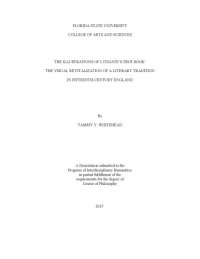
Ebook: The illustrations of Lydgate’s "Troy Book": The visual revitalization of a literary tradition in fifteenth-century England
Author: Tammy Y. Whitehead
- Genre: Literature
- Tags: Language literature and linguistics, Communication and the arts, England, Geoffrey of Monmouth, Henry V King of England, Lydgate John, Troy Book
- Year: 2015
- Publisher: The Florida State University
- Language: English
- pdf
This dissertation examines the ways in which Lydgate's Troy Book, both the textual and visual narratives, functioned in fifteenth-century England. As Henry V sought to legitimate his claim to the throne usurped by his father, he capitalized on the burgeoning sense of an English national identity by patronizing literature in the English vernacular as a means to glorify both nation and language. In an age in which genealogical claims were the most important indicator of a person's right to rule, Henry exploited the Trojan origin myth, which had circulated in England and other European communities since the early Middle Ages, not only to glorify England as an inheritor of Rome's imperial mission and to solidify the Lancastrian claim, but also to help solidify and renew the English claim to the French throne.
The Troy Book was immensely popular in the fifteenth-century and was reproduced in at least twenty-three manuscripts, including fragments. Eight of these manuscripts received illustrations, and a basic visual program can be detected in each of them. However, two of these manuscripts are exceptional for the inclusion of illustrations beyond this basic program - London, British Library, MS Royal 18 d. ii (c. 1455-62) and Manchester, John Rylands Library, MS English 1 (c. late 1440s). Because the manuscripts were produced at different points in the fifteenth century, a careful examination of the images in light of contemporary historical events helps establish the patron's views and ambitions that may have helped shape the pictorial narrative. I will argue that the anomalous images in the Royal manuscript must be read in light of both the recently failed war with France and the current civil war between the houses of York and Lancaster and that these images represent aristocratic anxieties and desires for peace. This argument will culminate in an examination of the images in the Rylands manuscript, the most sumptuous of the Troy Book manuscripts, which includes sixty-nine miniatures. It was commissioned slightly earlier than the Royal manuscript during the waning fortunes of the Hundred Years War and conforms most closely to the purposes of the original text: to glorify Trojan origins and England by identifying Henry V with Hector, to act as a manual for chivalry and proper war practices, to emphasize the role of fortune in worldly events, and to provide moral instruction to both the aristocracy and the nobility.
The Troy Book was immensely popular in the fifteenth-century and was reproduced in at least twenty-three manuscripts, including fragments. Eight of these manuscripts received illustrations, and a basic visual program can be detected in each of them. However, two of these manuscripts are exceptional for the inclusion of illustrations beyond this basic program - London, British Library, MS Royal 18 d. ii (c. 1455-62) and Manchester, John Rylands Library, MS English 1 (c. late 1440s). Because the manuscripts were produced at different points in the fifteenth century, a careful examination of the images in light of contemporary historical events helps establish the patron's views and ambitions that may have helped shape the pictorial narrative. I will argue that the anomalous images in the Royal manuscript must be read in light of both the recently failed war with France and the current civil war between the houses of York and Lancaster and that these images represent aristocratic anxieties and desires for peace. This argument will culminate in an examination of the images in the Rylands manuscript, the most sumptuous of the Troy Book manuscripts, which includes sixty-nine miniatures. It was commissioned slightly earlier than the Royal manuscript during the waning fortunes of the Hundred Years War and conforms most closely to the purposes of the original text: to glorify Trojan origins and England by identifying Henry V with Hector, to act as a manual for chivalry and proper war practices, to emphasize the role of fortune in worldly events, and to provide moral instruction to both the aristocracy and the nobility.
Download the book The illustrations of Lydgate’s "Troy Book": The visual revitalization of a literary tradition in fifteenth-century England for free or read online
Continue reading on any device:

Last viewed books
Related books
{related-news}
Comments (0)